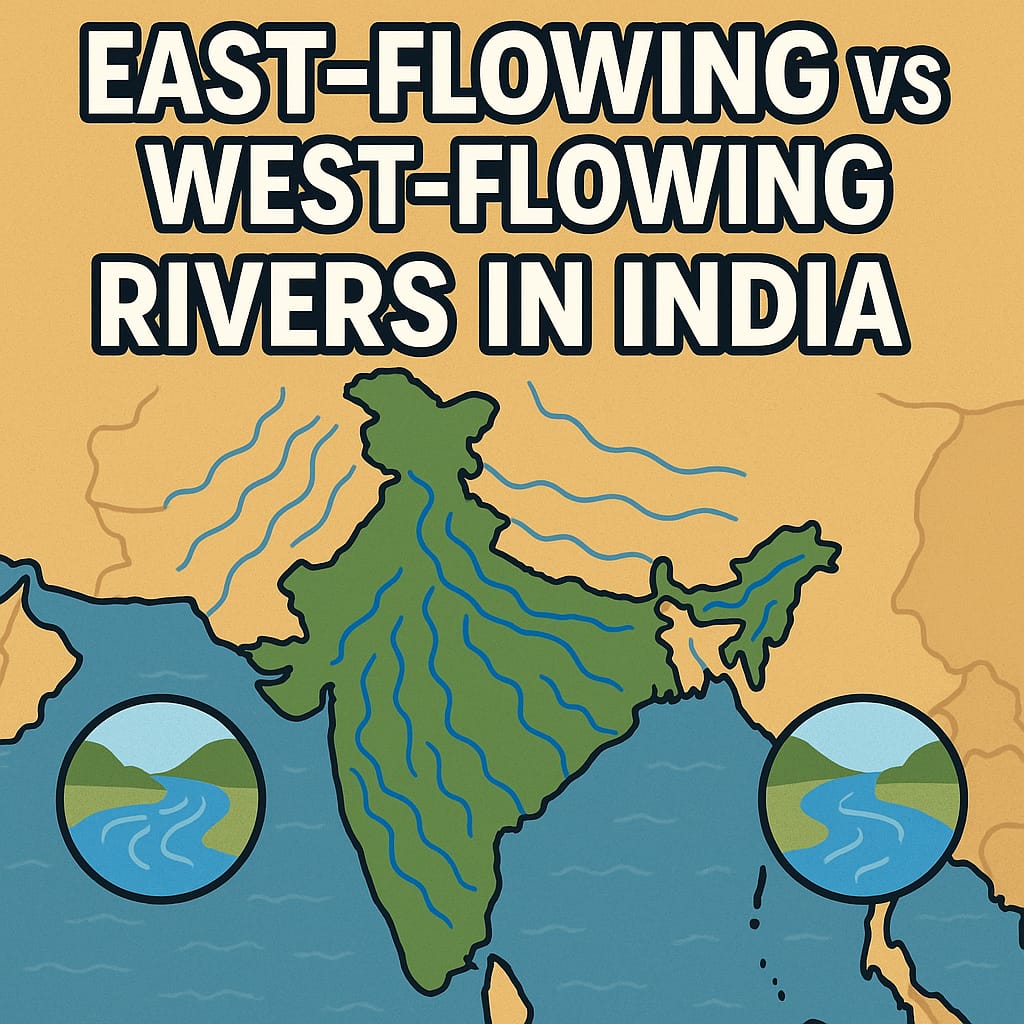East-Flowing vs West-Flowing Rivers in India
East-Flowing vs West-Flowing Rivers in India
Published by Smart Study Academy
India's rivers are broadly classified based on the direction they flow. Understanding east-flowing and west-flowing rivers helps us appreciate the country's geography, water resources, and regional ecosystems.
🏞️ East-Flowing Rivers
- Examples: Ganga, Godavari, Krishna, Mahanadi, Cauvery
- Length: Generally longer with larger deltas
- Drainage Pattern: Form deltas (e.g., Sunderbans, Godavari Delta)
- Basin Area: Covers large parts of central, north, and south India
- Economic Use: Major role in irrigation, transport, and agriculture
🏔️ West-Flowing Rivers
- Examples: Narmada, Tapi, Mahi, Sabarmati
- Length: Shorter in comparison
- Drainage Pattern: Form estuaries due to steep western slopes
- Basin Area: Mostly in western India – Gujarat, Maharashtra, Madhya Pradesh
- Hydropower: Greater potential due to elevation drops
🔍 Key Differences at a Glance
| Feature | East-Flowing Rivers | West-Flowing Rivers |
|---|---|---|
| Direction | Bay of Bengal | Arabian Sea |
| Delta Formation | ✅ Yes | ❌ No (estuaries instead) |
| Number | More | Fewer |
| Length | Longer | Shorter |
| States Covered | Many (across India) | Mainly western India |
🌱 Why This Matters
- Helps in planning irrigation and dam projects
- Affects agriculture, especially paddy in delta regions
- Crucial for flood control and coastal erosion
- Influences biodiversity and ecosystems along the coasts
India’s east- and west-flowing rivers not only shape its landscape but also support millions of lives. A balanced understanding of both systems is essential for sustainable water management.
